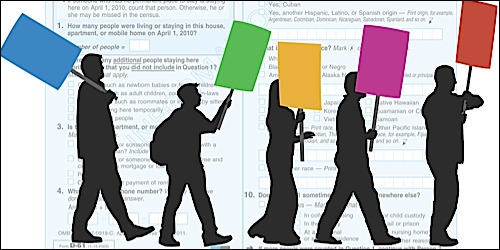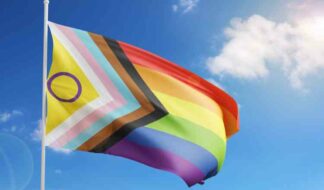by Jessica Carreras

In March of 2010, millions of people will open up their mail and find their 2010 census. Extrapolating from 2000 census data, at least 600,000 of these households will include a same-sex couple. The National Gay and Lesbian Task Force – along with several other advocacy groups – wants to make sure that those couples help to queer the census.
The U.S. census is crucial in determining Congressional seats, as well as where state and federal monies go. It also helps to form arguments for and against public policy – a useful tool for LGBT Americans, who have only recently begun to be counted in the decennial census.
In 1990, the U.S. Census Bureau made a change to census forms that, for the first time ever, accidentally created a way for LGBT couples to show themselves. "In 1990, for the first time, (the Census Bureau) wanted to look at what unmarried partners were doing," explained Jaime Grant, head of the Task Force's Policy Institute. "And since you could also check off gender on your form, it basically created an unintentional sample of queer couples."
The Task Force jumped on the opportunity to have their first-ever federal data on LGBT couples in the U.S. The organization encouraged same-sex couples to check the 'unmarried partner' box – and it worked.
In the 1990 census, 190,000 same-sex couples were identified. In 2000, that number jumped to 595,000. "That data set," Grant said, "has been enormously important to the community in terms of making arguments about our civil rights."
The 2010 count
The 2010 census will have one important change from any previous collection: it's the first to include same-sex married couples.
In 2004, Massachusetts became the first U.S. state to legalize same-sex marriages. Since then, Iowa, New Hampshire, Connecticut and Vermont have also made them legal, plus California for a short time before Proposition 8 took that right away.
A consulate to the Census Bureau estimates that the number of same-sex couples who have been legally married in the U.S. is near 100,000, but next year's census will provide the first federal set of data showing what impact the legalization of same-sex marriages has made in the country.
Though the Bush administration had originally vowed to redesignate those marriages into the "unmarried partnership" category, President Barack Obama has agreed to count them in the 2010 census – a huge win for LGBT Americans.
Grant explained that the 2010 census data about same-sex couples will be useful both in advocating for public policy and for conducting research and making judgments about the makeup of the LGBT community.
One question the Task Force hopes to resolve, however, is whether couples should mark the "unmarried partner" box, or the "husband or wife" box on their census forms. According to Grant, couples should simply be truthful to what they believe – even if their marriage was performed in another country, as is the case for many of Michigan's gay couples wed in Canada.
"We tell people to tell the truth as they know it," Grant stressed. "If you're legally married anywhere, check the 'husband and wife' box. Our partnerships need to be visible on the census one way or another. So however you resolve it for yourself, make yourself visible. That's the most important thing."
Including the question
In the coming years, the Task Force hopes to use incoming data about same-sex couples to make an even bigger argument: including questions about sexual orientation on annual and decennial census forms.
Grant's hope is that with larger numbers of same-sex couples reporting their relationships to the Census Bureau, it will fuel the argument that there is a need to count them as individuals. And the Task Force is providing another way to make their voices heard.
Their Queer the Census stickers, available online at www.queerthecensus.org, afford anyone the opportunity to support the cause and to make their orientation known. Advocates are encouraged to put the marked sticker – which has categories for lesbian, gay, bisexual, transgender and straight ally – on the back of the census envelope.
"We want to make visible the reality that we're all invisible, virtually, on the census as individual LGBT people," Grant said of the effort. "There's no data on our community and it leaves the particular strengths and vulnerabilities of our community invisible. It makes it impossible to create good public policy around LGBT needs when you don't know, for instance, how many LGBT elders live in your area and whether you need a public housing project for them."
The data will also be crucial in drawing conclusions about the racial, ethnic and economic makeup of the LGBT community, an area Grant said is important for the work the Task Force does in dispelling myths about the community. "This sort of data flies in the face of the mythology about the community that we're all white and all live in four cities," she said of 2000 data showing large numbers of both black and Latino same-sex couples, many in a low income bracket. "We found queer couples in 96 percent of all counties in the entire country, so we really are everywhere. We're of many different races, and we're not all economically privileged."
And with a push from the LGBT community on next year's census, the Task Force hopes that they can use the numbers to create change in U.S. policy and law. "The Bush administration shut off every funding spigot and every light that was on in the federal government for eight years that had anything to do with us," she said. "We have got to turn them all back on. We have to be really noisy, and the census is a great way to do that."










